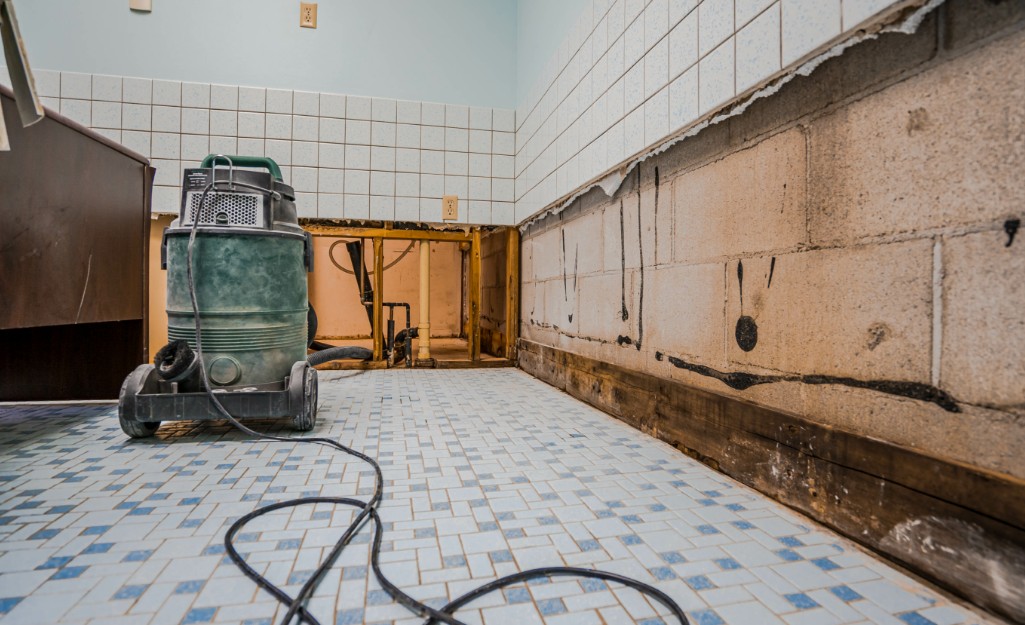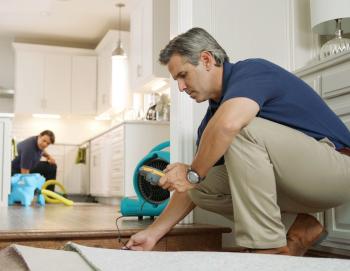A homeowner’s guide to understanding Water Damage Restoration
Wiki Article
Water Damage Restoration 101: Comprehending the Process and Expense
Water damage can strike suddenly, leaving home owners in a state of complication. Understanding the repair process is crucial for effective healing. From assessing the damage to choosing the best provider, each action affects the total end result and price. Variables such as the kind of water damage and necessity additionally play a substantial duty. What are the certain techniques used in restoration, and how can one plan for possible costs?Types of Water Damage
Water damage can occur from various sources, each providing special obstacles for reconstruction. The 3 main sorts of water damage are classified based on contamination levels: clean water, gray water, and black water. Clean water originates from resources like damaged pipes or rain, presenting minimal health threats. Gray water, which consists of wastewater from sinks or washing makers, contains contaminants that might cause pain or ailment if ingested. Black water, the most dangerous classification, comes from sewage or floodwaters, including hazardous bacteria and microorganisms. Each type requires particular reconstruction methods and safety measures to effectively reduce and resolve the damage health and wellness risks. Comprehending these distinctions is necessary for property owners and specialists associated with the water damage restoration process.First Assessment and Examination
A detailed initial assessment and assessment are essential action in the water damage repair procedure. This stage starts with a specialist evaluating the extent of the damage, identifying the source of the water intrusion, and determining the kind of water entailed - Water Damage Restoration. Service technicians use specialized tools to gauge dampness degrees in numerous products, such as wall surfaces, floorings, and furnishings. Additionally, they analyze architectural honesty and possible carcinogen, consisting of mold and mildew growth. The findings from this inspection notify the repair plan, directing required activities and source allotment. Accurate documents of the damage is crucial for insurance cases and future recommendation. Generally, this preliminary assessment prepares for efficient remediation, guaranteeing a detailed feedback to the certain circumstance at hand

Water Removal Techniques
Complying with the initial assessment, efficient water extraction techniques are used to minimize damage and prevent further problems. These techniques entail the use of customized devices such as submersible pumps and industrial-grade vacuums. The selection of technique depends on the volume of water present and the kind of materials affected. For standing water, completely submersible pumps are normally utilized for quick removal, while vacuum cleaners are suitable for removing water from rugs and upholstery. Furthermore, progressed techniques like water removal mats may be employed for hard-to-reach locations. The goal is to eliminate as much water as feasible, minimizing the capacity for mold and mildew growth and structural damage. Trigger and reliable water removal is vital in the total water damage restoration process.Drying and Dehumidification Process
Once the water extraction is full, the drying and dehumidification process ends up being critical to restoring the damaged area. This stage normally employs industrial-grade dehumidifiers and air movers to effectively reduce wetness degrees. The dehumidifiers reel in damp air, removing excess moisture, while air moving companies distribute air to accelerate dissipation. Monitoring devices is frequently made use of to track moisture and temperature level levels, guaranteeing excellent drying out problems. The period of this procedure can vary relying on the level of the water damage and environmental variables. It is important to completely completely dry all impacted materials, consisting of wall surfaces, flooring, and home furnishings, to protect against mold growth and structural damage. Proper execution of this action is critical for an effective reconstruction end result.Cleansing and Disinfecting Damaged Areas

Initial Analysis and Inspection
Prior to beginning any kind of repair efforts, a complete initial evaluation and inspection of the impacted areas are vital for efficient cleaning and sanitizing. This procedure entails determining the degree of water damage, identifying the resource of the water invasion, and evaluating the products influenced. Assessors typically seek indicators of mold growth, architectural honesty concerns, and damaged possessions. The analysis also includes inspecting moisture levels using specialized devices to guarantee no hidden water pockets continue to be, as these can cause additional complications. Documenting the findings is essential for preparing the following action in the reconstruction process. A detailed preliminary analysis makes it possible for repair specialists to devise a targeted method for reliable cleaning and sanitizing, ultimately lessening damage and wellness threats.Cleaning Up Strategies and Products
Efficient cleaning and sanitizing of water-damaged locations call for a selection of items and strategies tailored to the certain products impacted. For porous surface areas like drywall and carpeting, removal techniques are necessary to get rid of excess dampness, complied with by deep cleaning with specialized detergents. Non-porous materials such as tile or metal can be cleansed utilizing commercial-grade cleansers that efficiently get rid of pollutants. Heavy steam cleaning is one more reliable strategy, especially for carpetings and furniture, as it uses high temperatures to get rid of germs and mold and mildew. Furthermore, environmentally friendly products are progressively prominent for their safety and security and effectiveness. Eventually, picking the appropriate cleaning approaches and products not just assures instant tidiness but additionally help in stopping further damage and health and wellness dangers related to water intrusion.Sanitization and Disinfection Approaches
When attending to water damage, proper sanitization and sanitation methods are important to guarantee the safety and security and health and wellness of the affected setting. After initial cleansing, surfaces must be treated with suitable anti-bacterials to remove microorganisms, mold and mildew, and bacteria that thrive in damp conditions. Usual approaches include using EPA-approved chemical anti-bacterials, which can be used with splashing or cleaning strategies. Additionally, ultraviolet (UV) light systems can successfully sterilize locations by reducing the effects of bacteria without harsh chemicals. The option of method commonly relies on the type of materials affected and the extent of contamination. Ultimately, detailed sanitization not only restores a safe space however likewise aids protect against future wellness threats related to lingering wetness and mold development.
Fixings and Restoration Options

Variables Influencing Restoration Expenses
The level of water damage directly affects the restoration costs house owners can anticipate to sustain. Aspects such as the source of the water, the duration of direct exposure, and the affected products greatly influence pricing. Clean water damage from a broken pipe is generally less expensive to restore contrasted to damage created by sewage (Flood Cleanup Services). In addition, the degree of contamination dictates the need for specialized cleansing and disposal services, further raising costs. Geographic area also plays a function, as regional labor rates and schedule of remediation services can vary. The seriousness of the action affects prices; quicker interventions generally lead to reduce overall expenditures by stopping additional damage. Comprehending these elements is essential for property owners when approximating restoration costsThe three key types of water damage are categorized based on contamination levels: clean water, grey water, and black water. An extensive first assessment and evaluation are important actions in the water damage restoration procedure. For standing water, submersible pumps are generally utilized for quick removal, while vacuums are perfect for removing water from rugs and furniture. The degree of water damage directly impacts Water Damage Restoration the repair costs house owners can anticipate to sustain. Tidy water damage from a busted pipeline is typically less expensive to bring back contrasted to damage caused by sewer.
Report this wiki page